What’s your worst nightmare when developing a mobile learning app?
Ours is that no one will use it.
But imagine spending all that time and money on an app nobody is interested in!?
Learners might have multiple reasons for not liking your app:
- They don’t think it is useful
- They find it inconvenient
- They are not motivated
- They are too busy etc.
What’s common in these reasons is the word ‘they’. Whether ‘they’ like it or not is about ‘them’, so should be the development of the mLearning app.
I am talking about the Learner-Centered Design approach, as a way to create mobile learning applications that become a success. With this approach, it is vital to learn as much about your trainees as possible and use this information when designing your mobile learning solution.
If you want to make them tick, find out what makes them tick!
And there is a great tool for that called learner persona that can help you get the necessary knowledge about your audience and actually use it.
In this article, we are sharing a simple approach on how to create learner personas and develop a successful mLearning app with their help.
Few Words on Personas
Persona is an archetype of a group of people that share similar characteristics. They come in a form of fictional characters comprised of key features particular to a group of people. Personas are based on research and analysis of your target audience.
Basically, it is a way of presenting the findings of this research, by organizing them into profiles of such personas. These profiles usually consist of demographics, job descriptions, and any other information that may be relevant to your purpose.
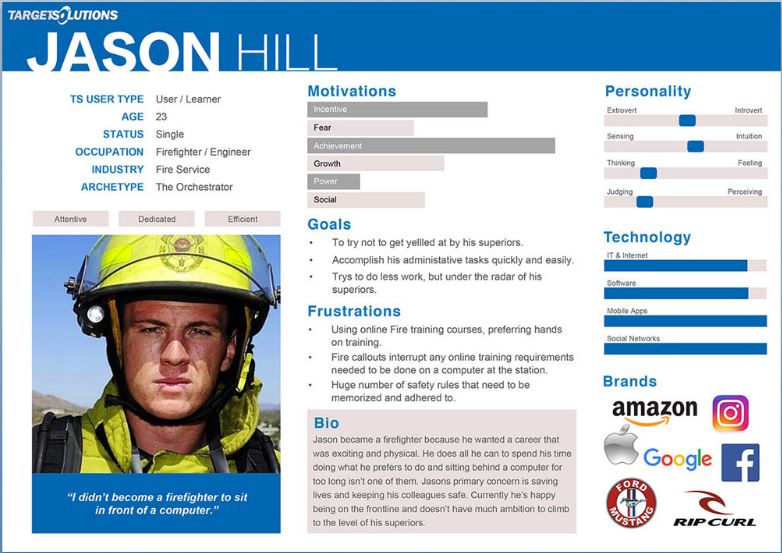
And personas are already exploited in different spheres of business.
Marketing professionals are very familiar with this term, except we call them marketing or buyer personas. Marketers use personas in all aspects of their work: to craft compelling marketing messages, to write magnetic copy, to design campaigns, etc. Some even create cardboard figures of their personas to keep them in mind at all times.
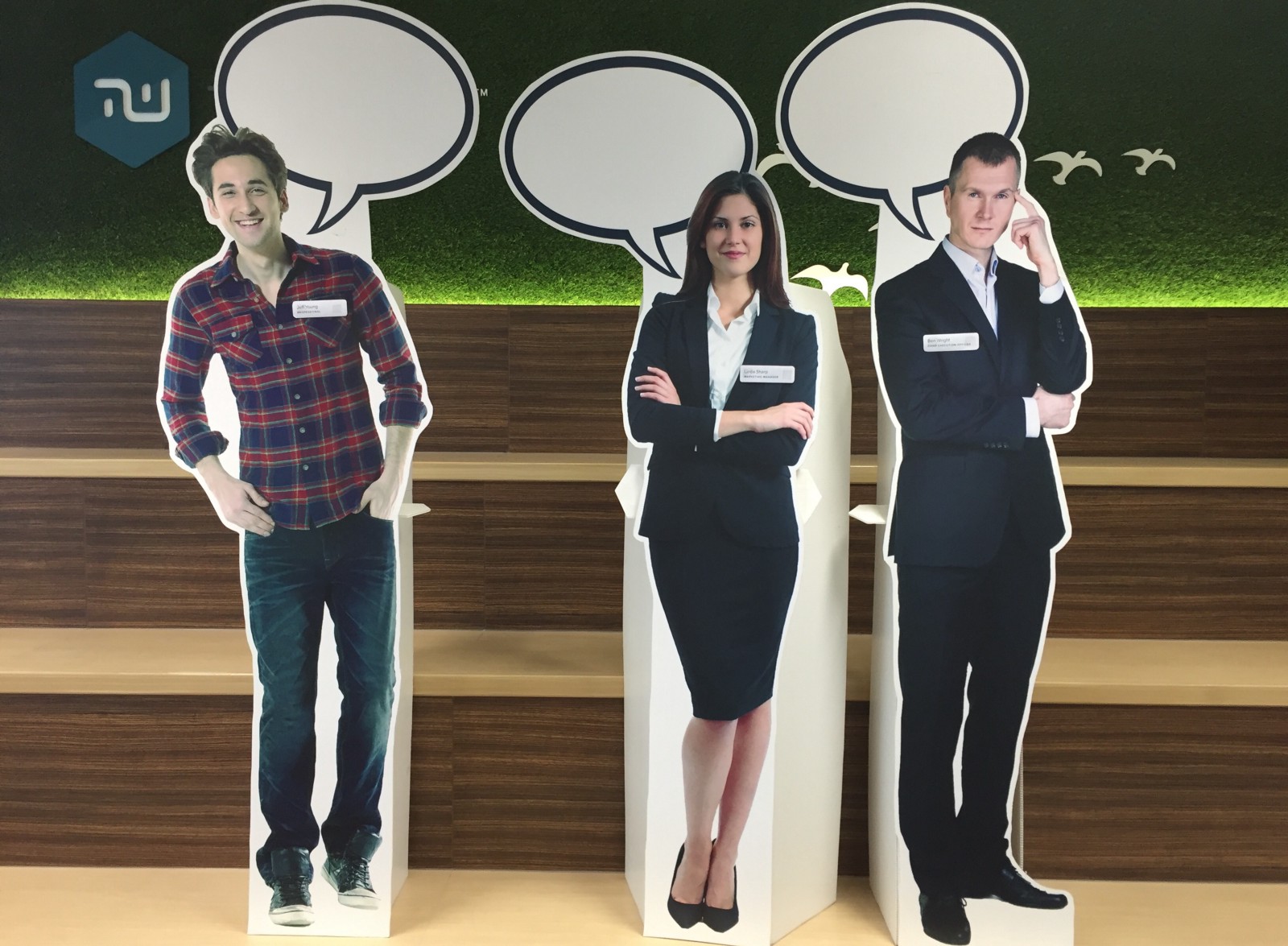
UX professionals and software developers also have user personas that help them with the design and development of user-friendly products.
And finally, educators use learner personas to design successful learner-centered solutions (both online and offline).
The sole purpose of personas is to guide your decisions, be it about developing mobile learning apps or software, or marketing. Your work becomes driven by those who are going to use the end-product.
This is so effective because it is easier to think of and empathize with a person than a set of data when developing a solution.
Using Personas in Mobile Learning Design
Here are some examples of decisions you can make with a help of your learner personas:
- How to present material, so that it will resonate with learners
- How to choose platforms for an app
- What formats will be most convenient
- How to plan curriculum How to engage
- How to evaluate etc.
There are many methods and tools to develop personas (e.g. Smaply). But, of course, every project is different and requires a custom approach.
Nonetheless, I’d like to suggest a simple framework that will help to get you started.
It will give you ideas on what information to look for and how to use it. This framework consists of five questions:
- Who is going to use your mLearning app?
- Why is the learner going to use it?
- What is the learner going to use it? for
- Where and in what circumstances is the learner going to use it?
- How is the learner going to use it?
First, you’d have to answer them for each persona and then generate ideas for applying this knowledge in your mobile learning development.
Who?
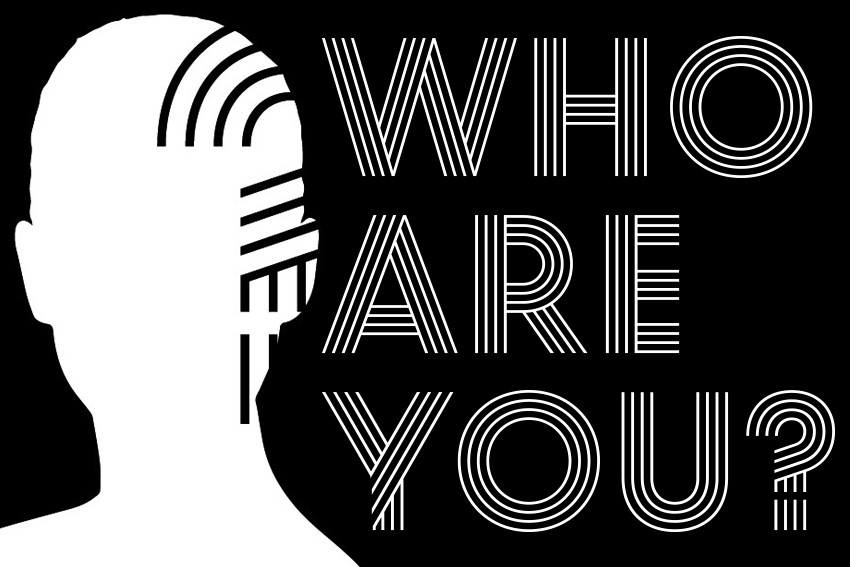
The first question has to do with the basic profile information. Who is this hypothetical person and what is he/she like?
- Demographics: age, sex, marital status, location, etc.
- Role in a company
- Interests
- Personality type.
For example:
Sally is 45. She is married with two kids. Sally lives in Portland, OR. She works as a pharmaceutical sales representative. In her free time, she loves to watch popular TV shows. She is also a big running enthusiast, participating in half marathons on regular basis. She is a very energetic and outgoing person.
How to use it:
- Chose the tone of voice for the instructional materials that will resonate with your persona.
- Use an entertainment theme based on personal interests. The so-called edutainment can be a very effective method of engagement. For instance, we’ve developed a serious game under the theme of Tough Mudder TV show.
- Get ideas on gamification strategies. For example, if this person is competitive by nature, she might like the idea of competing against her colleagues. We’ve developed many educational games for sales reps with scoring systems and leaderboards. They work really well at engaging the reps, who very competitive.
- Think of ways to utilize social learning elements. If your persona is outgoing and likes to collaborate, she might be compelled to unite with colleagues. For instance, you might include some opportunities for mentorship and peer-to-peer material sharing in your mLearning app.
Why?
It’s been proven that intrinsic motivation works better than extrinsic. In other words, we always work harder when motivation comes from within and we know exactly why we do what we do. By the way, here is a great TED talk about it - ‘How Great Leaders Inspire Action’, by Simon Sinek.
Thus, it is important to find out what drives your persona in life and at work:
- Life goals
- Career goals
- Work challenges and frustrations
- Dominating motivation type.
Example:
Sally is thriving to increase her life quality. She wants to improve her financial situation in such a way so that she could spend more time with her family and travel more. She also wants to level up her running from half-marathons to full marathons. At work, Sally aspires to become the best sales rep in her district and then a District Manager. Her work is very challenging. She has to be very knowledgeable about her portfolio of drugs and the medical conditions these drugs are aimed at. And she has to be on top of all that while meeting the increasing monthly sales quotas. It becomes harder and harder for her to keep up, especially as her portfolio widens. She feels overwhelmed. Sally is usually self-motivated, but she does enjoy getting recognition for her successes.
How to use it:
- Make a connection between your learning program and your persona’s motivations. Be sure your learner can clearly see how he/she can benefit from it.
- Help your learner to track her progress with formative evaluations. It can come in a form of pretests and posttests for every material piece. Then it is very useful to demonstrate those results visually, so the learner could see how she is progressing.
- Introduce a recognition system, where you acknowledge the most ambitious learners.
What?
This part is about the knowledge your persona has to gain with a help of your mobile learning solution. Naturally, this largely depends on why your project was initiated in the first place. I mean the goals and objectives the management is pursuing by investing in your program.
However, unless you personalize your program to the learners, they will regard it as irrelevant. And it will be highly ineffective and demotivating for employees to learn something they already know and spend too little time on what they really need to know.
So here is what you need to detect:
- Knowledge and skill gaps
- Perceived weak spots.
Example:
Sally’s knowledge of X and Y medical conditions is highly fragmented. She is also behind on the current studies regarding these conditions. And she doesn’t feel confident enough about her closing skills. She is always reluctant to follow up and be persistent.
How to use it:
- Offer material on the most relevant subjects that are vital for day to day work
- Pre-test knowledge and skills on all of the topics you are going to cover and adjust the program for each persona. This process can be partially or completely automated, so your app will generate a curriculum based on the test results.
Where?
The best mobile learning apps are always created with the usage context in mind. This means that the circumstances in which your app will be used should dictate the most convenient content formats and design.
Here we’d like to know about the physical locations and conditions in which your learner is going to study. We’d also like to know how much time she can allocate per session and how often can she learn. And, finally, it is important to know what devices she’ll run your app on.
The last one, coupled with your budget, will help you decide on the platform and technical requirements for your app. Depending on your choice of technology stack (cross-platform vs native), designing mobile learning apps for Android can be a lot different from designing for iOS.
So the learning context may consist of the following things:
- Locations and circumstances (in a car, bus, train, or waiting room; it is noisy or quiet)
- Duration
- Devices
- Frequency.
To understand the context, you’d have to know the following things about your persona:
- What is the daily and weekly workflow like?
- How does she commute to work?
- Does she have to drive to meetings?
- What mobile devices is she using on regular basis (models and platforms)?
- How good is internet connectivity in all these places?
- Does she often have ‘dead times’ at work (like sitting in waiting rooms)?
And any other questions that will give you ideas of how your mobile learning program can fit into the persona’s work and life flow.
Example:
Sally spends nearly half of her time in her car, driving to meetings. And another third of her time is spent in the waiting rooms of physicians. She spends on average 20-30 mins driving to a meeting and 15-20 mins in a waiting room. She is using her smartphone (iPhone) for calling, texting, and checking email. And, Sally uses her tablet (iPad) for reading work-related materials, preparing for meetings, and pharmaceutical detailing.
How to use it:
- Choose appropriate content formats for the context of use. Podcasts are good for listening in more quiet circumstances, like while driving or waiting in line. Educational games, texts, and visuals can be convenient to consume while commuting to work.
- Apply micro-learning strategies, by dividing your material into small bite-sized chunks. While doing that, it is important that the timing of your training sessions should correspond with the available time slots for learning (e.g. average waiting, driving, and commuting time).
- Choose the right platform(s) and technology stack for your app.
- Consider the usage context when designing interfaces (UX design) and testing them. For example, imagine using your app and driving at the same time. Where should all controls be? How should the buttons look?
- Make the quality of learning experiences independent of internet connectivity. Add offline modes and offer to download videos and audios.
How?
The context in which an app is going to be used is not the only thing that influences the choice of content formats. The formats also depend on individual perceptions and preferences of your persona.
So it’s useful to ask yourself what experience type prevails with your persona? Is she more of a visual or audial learner?
This doesn’t mean that you’d have to create content only in one format. It rather means that the preferable type should be used more often.
Example:
To fully digest the material, Sally has to see it. So if she only gets to listen to an instructor or a podcast, without any reinforcing visual material, she’ll forget it.
How to use it:
- Give preference to the formats that are most effective for your persona
- Consider presenting the same material in more than one format.
Summary
Here is a summary of the framework that will help you use personas to make mobile apps for learning.
|
What information to look for? |
How to use it? |
|
|
Who? |
Demographics Personality Work Interests |
Tone and voice Edutainment Gamification Social learning |
|
Why? |
Life goals Work goals Work challenges Motivation type |
Connect to goals Show progress Recognize for successes |
|
What? |
Knowledge gaps Weak spots |
Personalize Pretest and adjust |
|
Where? |
Locations Conditions Devices Durations Frequency |
Content formats Micro-learning UX design Platforms and tech stack |
|
How? |
Experience type |
Content formats |
This is by no means an exhaustive list and it shouldn’t be treated that way. Our intention is to give you directions and ideas that will help you build mLearning apps that your learners will love!
NOTE:
Consider using Universal Design for Learning. This would mean designing your mobile learning sessions for the most ‘difficult’ circumstances for learning. Imagine the worst-case scenarios when your persona can use your app and design learning experiences so that it would still be possible to learn in those situations. It can be situations like using your app while driving, no internet connectivity, being in a very noisy place or learning only for 2 mins at a time, etc.
In addition to that, Universal Design also implies that your app should be designed to cater to all individual capabilities. This also includes taking into account individual peculiarities and disabilities of your trainees that may impede learning.
Conclusion
Knowing your learner is key to the success of any educational project! And it may be even more vital for mobile learning, as it is so ‘close’ to the learner. Unless your app will fit seamlessly into the daily flow of your trainees that are already very busy and overwhelmed, it won’t take root.
Yet, it may be hard to put yourself in the shoes of your audience by only looking at data. That’s why educators have adopted the concept of a learner persona. It is a very powerful tool that you can use to develop a learner-centered solution.
What do you think about this approach? How are you going to leverage learner personas in your mobile learning project?
We are glad to consult you on developing your mobile learning app.
Contact UsRate this article!
5

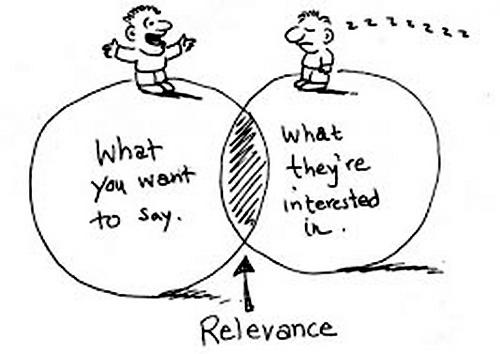




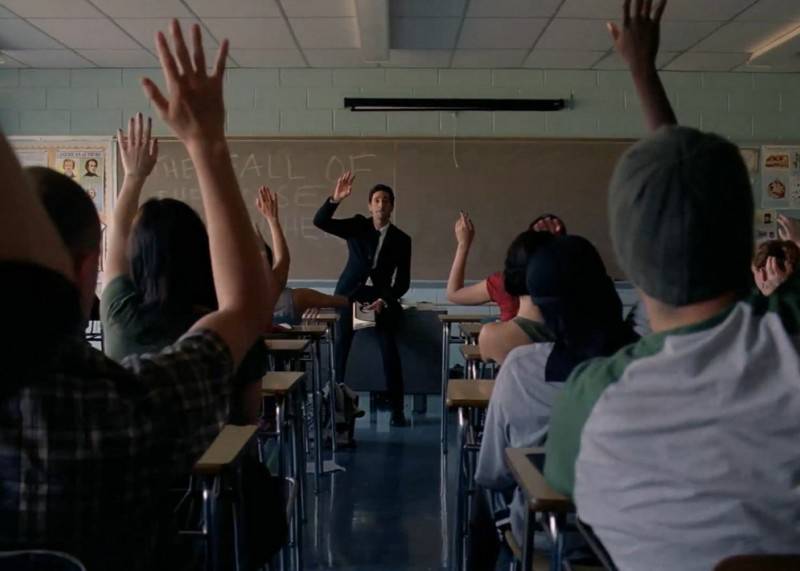


 Sign in with Google
Sign in with Google
Comments (0)